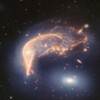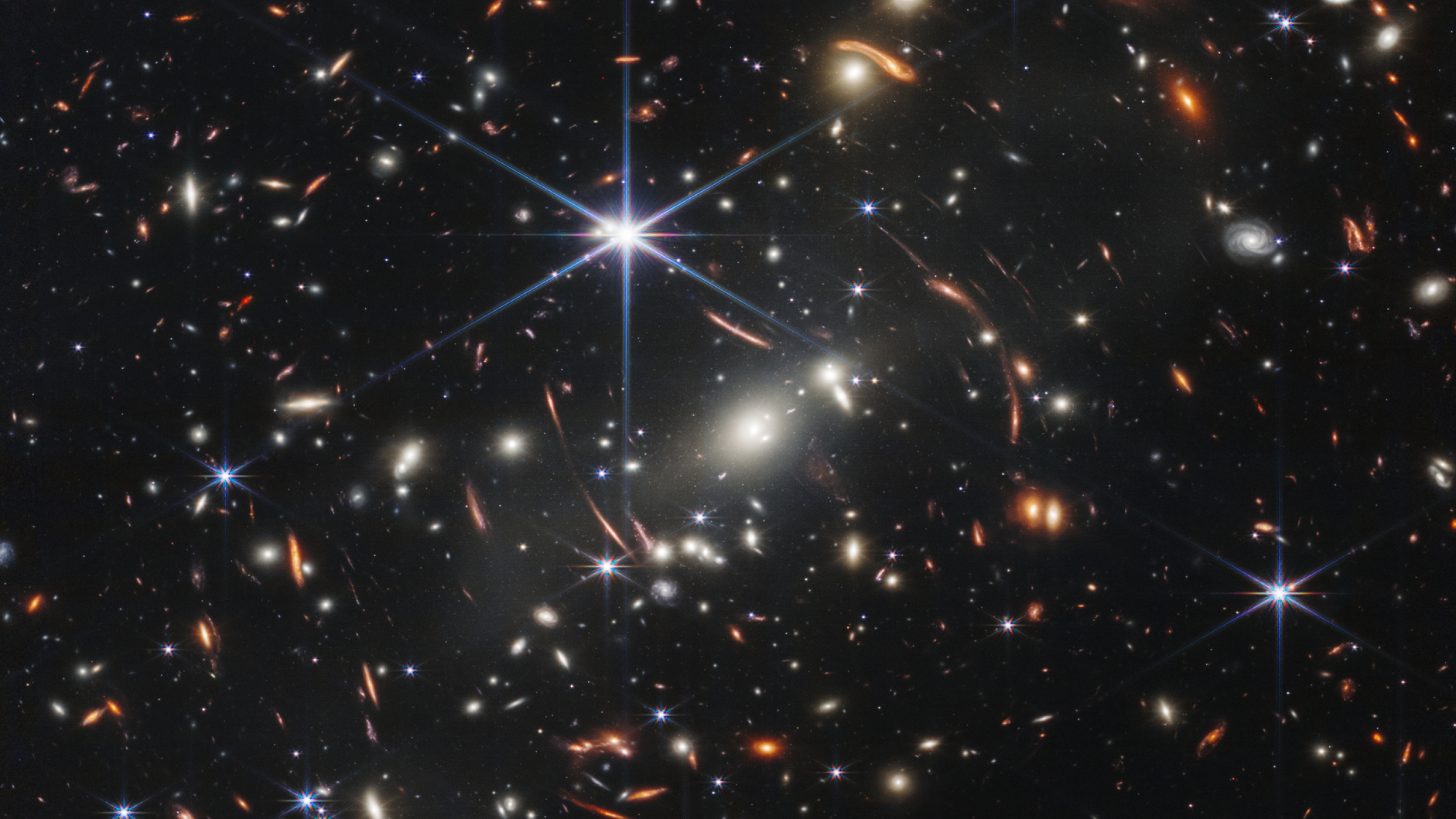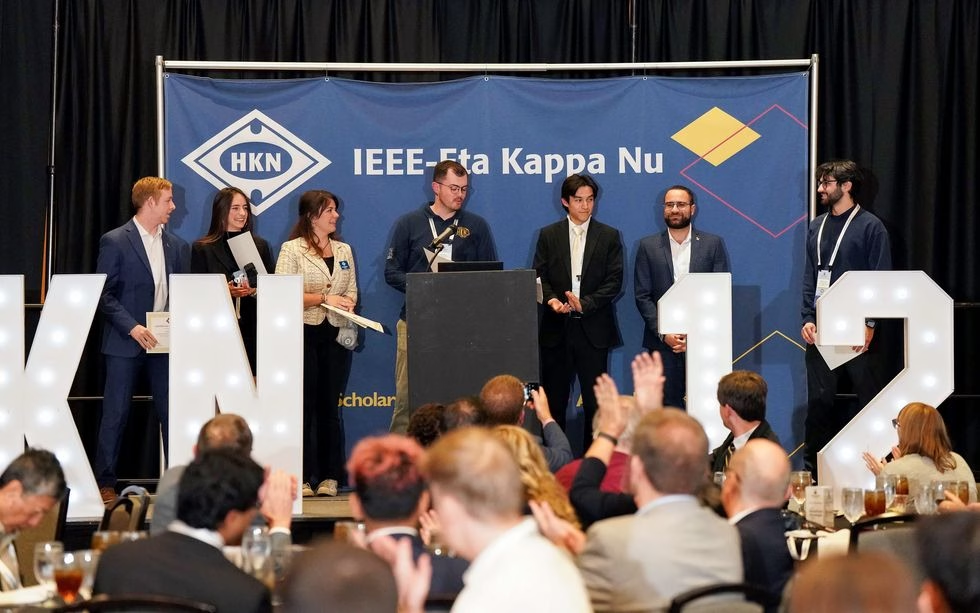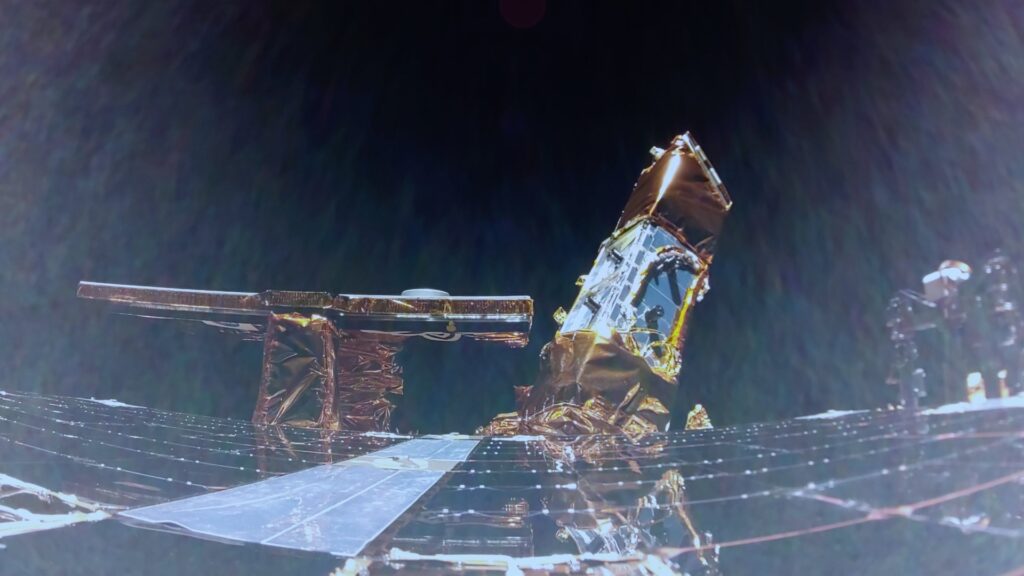Galactic penguin honors the 2nd anniversary of James Webb Space Telescope’s 1st images

NASA Space Technology
To celebrate two years since the James Webb Space Telescope (JWST) started sending images back to Earth, NASA has released yet another stunning image taken by the revolutionary space telescope.
The second-anniversary JWST image shows two interacting galaxies that make up a single object called Arp 142, which appears like a cosmic penguin with its cosmic egg. Fittingly for a celebration of the JWST’s two years of science results, the new image is a two-for-two. Arp 142’s Penguin and Egg scene comprises two interacting galaxies located around 326 million light-years from Earth in the constellation of Hydra. It has been observed before, but never in as much detail as this view from the JWST has allowed.
Related: James Webb Space Telescope sees an ancient black hole dance with colliding galaxies

“In just two years, the JWST has transformed our view of the universe, enabling the kind of world-class science that drove NASA to make this mission a reality,” Mark Clampin, director of the Astrophysics Division at NASA Headquarters in Washington said in a statement. “The JWST is providing insights into longstanding mysteries about the early universe and ushering in a new era of studying distant worlds, while returning images that inspire people around the world and posing exciting new questions to answer.
“It has never been more possible to explore every facet of the universe.”
Galaxies throw a party for the JWST
In the new image, Arp 142 is seen in infrared light by the JWST’s Near-Infrared Camera (NIRCam) and Mid-Infrared Instrument (MIRI); the “penguin” is a misshapen spiral galaxy called NGC 2936, while its “egg” is the galaxy NGC 2937. The two galaxies are separated by around 100,000 light-years, which is actually quite close in galactic terms. For example, the Milky Way galaxy and the Andromeda Galaxyits nearest neighbor, are around 2.5 million light-years apart
The Arp 142 interaction began between 25 million and 75 million years ago, when the two galaxies first swept past each other, disrupting the spiral shape of NGC 2936. As the interaction continues, further golden threads will be pulled from this cosmic penguin until the galaxies finally collide and merge.
Within the penguin part of this duo, NGC 2936’s galactic center gleams in the cosmic waterfowl’s head as a bright shining eye. The unwinding arms of gas, dust, and stars of NGC 2936 form the penguin’s beak, head, back and fanned-out tail.
Like most spiral galaxiesNGC 2936 is rich in gas and dust, which is being pulled on by the egg half of the situation, NGC 2937. This causes regions of increased gas density in NGC 2936 that cause bursts of star formation. These regions can be seen in the beak, feathers and tail of the Penguin in the JWST image.
The new stars are surrounded by orange, smoke-like gas containing carbon-based molecules called polycyclic aromatic hydrocarbons (PAHs)which the JWST has become adept at seeing. While the Penguin tells a story of disruption and upheaval, the galaxy that represents its egg is relatively undisturbed. NGC 2937 is an elliptical galaxy that is packed with older stars than those of NGC 2936. This galaxy consists of less gas and dust than its companion, which means the interaction isn’t triggering the same bouts of intense star formation.
The fact that the Penguin and its egg are relatively the same mass has prevented one galaxy from simply devouring the other.
Birthday party tricks
Of course, NASA couldn’t throw a party for the JWST if only two galaxies rolled up.
The galaxy PGC 1237172 is at the top right of the Penguin and Egg image. The blue swoop is an edge-on view of this young galaxy, which is packed with blue infant stars and is just 100 million light-years from Earth.

PGC 1237172 also performs quite a neat party trick for the JWST. The blue edge-on galaxy disappears when the same region is seen in mid-infrared by MIRI (above).
Sorry to spoil the illusion. This happens because MIRI is better at seeing mid-infrared light from older stars and dust, with this galaxy’s copious young stars vanishing in those wavelengths of light.
Making up the rest of the party are a multitude of other distant galaxies — some are semi-hidden within the tail feathers of NGC 2936, while others shine faintly in the background.
Two years of the JWST
The JWST launched on Christmas Day in 2021but spent the first few months in space calibrating its instruments as it prepared to observe the cosmos in infrared light. On July 11, 2022, President Biden and Vice President Harris revealed the first image from the $10 billion telescope in a press conference from the White House.
This image featured the galaxy cluster SMACS 0723 and became known as the JWST’s First Deep-Field image.

This reveal was followed a day later by a live NASA broadcast, which revealed three more stunning images from the JWST — the event marked by this new image release.
The pictured objects shown to the public on July 12, 2022, included Stephan’s Quintetthe cosmic cliffs of the Carina Nebula and some supernova wreckage left behind by a dying star. These images were accompanied by data collected by the JWST from the atmosphere of the hot gas giant exoplanet WASP-96 b.

In the two years since then, the JWST has continued to deliver images of staggering beauty while also providing scientists with data that has revolutionized our understanding of the cosmos.
The JWST has spotted the most distant galaxies ever seen by humanitysome of which are so distant they existed when the 13.8 billion-year-old cosmos was just 300 million years old. The most powerful space telescope ever has also observed quasars powered by supermassive black holes that existed less than 1 billion years after the Big Bang. This has actually provided cosmologists with a massive problem in explaining how these titans grew so massive so quickly in the infant universe.

The JWST is adept at spotting light from galaxies that has had its wavelengths “stretched” by the expansion of the universe as the light spent billions of years traveling the cosmos. That’s why the telescope is so good at seeing early galaxies and quasars.
Astronomers didn’t expect the space telescope to be so useful much closer to home, however, particularly in our solar system. That was just a nice surprise. Rather than being blinded by close objects, as astronomers feared it may be, the powerful space telescope has been able to image familiar solar system bodies like Jupiter (seen above) in an incredible new light.
“Since President Biden and Vice President Harris unveiled the first image from the James Webb Space Telescope two years ago, Webb has continued to unlock the mysteries of the universe,” NASA Administrator Bill Nelson said in the statement. “With remarkable images from the corners of the cosmos, going back nearly to the beginning of timethe JWST’s capabilities are shedding new light on our celestial surroundings and inspiring future generations of scientists, astronomers, and explorers.”
Join our Space Forums to keep talking space on the latest missions, night sky and more! And if you have a news tip, correction or comment, let us know at: [email protected].
Discover more from Tamfis Nigeria Lmited
Subscribe to get the latest posts sent to your email.



 Hot Deals
Hot Deals Shopfinish
Shopfinish Shop
Shop Appliances
Appliances Babies & Kids
Babies & Kids Best Selling
Best Selling Books
Books Consumer Electronics
Consumer Electronics Furniture
Furniture Home & Kitchen
Home & Kitchen Jewelry
Jewelry Luxury & Beauty
Luxury & Beauty Shoes
Shoes Training & Certifications
Training & Certifications Wears & Clothings
Wears & Clothings
















